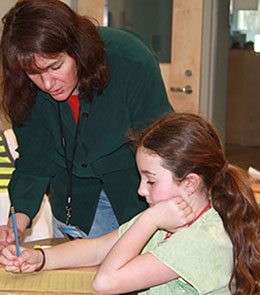 As another school year winds to a close, I’m feeling encouraged about the state of nonfiction reading and writing in elementary classrooms across the country.
As another school year winds to a close, I’m feeling encouraged about the state of nonfiction reading and writing in elementary classrooms across the country.
In 2010, when the Common Core State Standards were introduced, educators began asking me for ideas and strategies for implementing the Reading Informational Text standards. And they were hungry for tips and tools that they could use to teach informational writing.
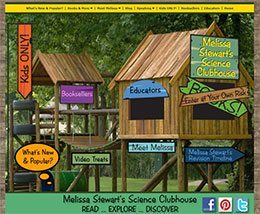 So I began to think deeply about the craft of nonfiction writing. I described my evolving insights and observations on my blog and provided resources on my website and pinterest pages.
So I began to think deeply about the craft of nonfiction writing. I described my evolving insights and observations on my blog and provided resources on my website and pinterest pages.
Teachers, school librarians, reading specialists, and literacy coördinators appreciated what I was doing. They used my resources. They emailed me with questions. They asked me to participate in Twitter chats. And they invited me to their schools. We shared ideas, and together, our understanding of nonfiction, especially expository nonfiction, grew.
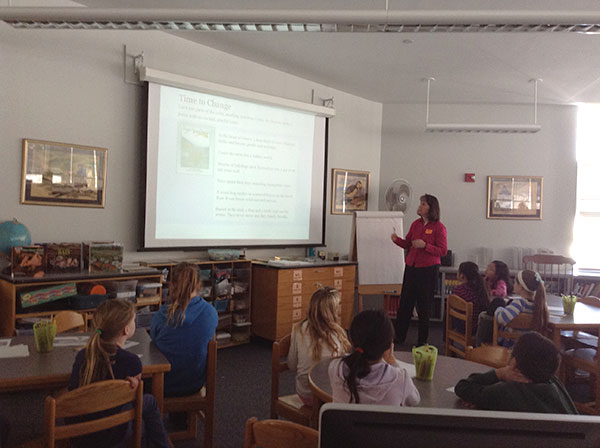
This year I saw tangible evidence that educators’ efforts are paying off. When I visited schools, teachers no longer nervously asked me, “How can we teach nonfiction?” Instead, they proudly exclaimed, “Look at how we’re teaching nonfiction!” Then they showed me the amazing projects their students had completed.
Here are some the great ideas educators have shared with me.
Nonfiction Smackdown!
Mrs. Paradis, teacher-librarian
Plympton Elementary School, Waltham, MA
Students in grades 3 – 5 read two nonfiction books on the same topic. Then they evaluate and compare the two titles, recording their thinking on a worksheet like this one. When students are done, they can share their responses with classmates. Or the worksheets can be posted, so that other students can use the information to help them make book choices.
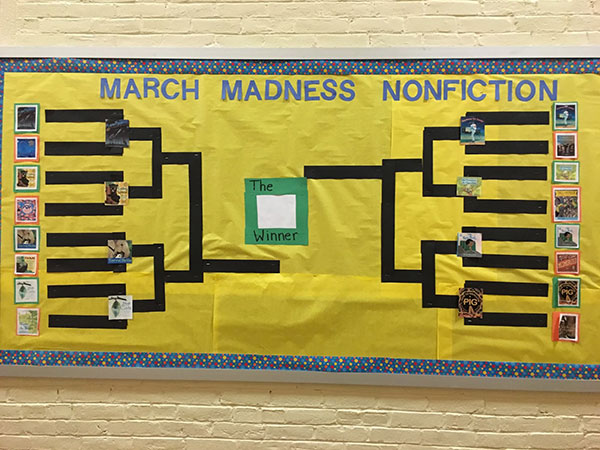
March Madness Nonfiction
Mrs. Moody, instructional coach
Williams Elementary School, Oakland, ME
During the month of March, students in every grade level participated in classroom read-alouds of sixteen nonfiction picture books. Then the children voted on their favorites. Here’s more info about this fun, whole-school activity.
Text Feature Posters
Mrs. Teany, kindergarten teacher
Memorial Elementary School, Medfield, MA
After reading a variety of age-appropriate books written by me, K‑2 students created fabulous text feature posters, using the ones in my books as mentor texts. Take a look at these terrific examples.
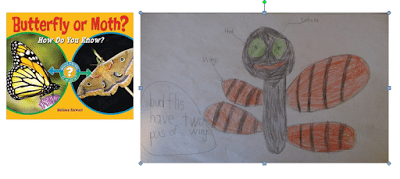
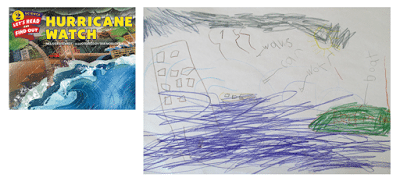
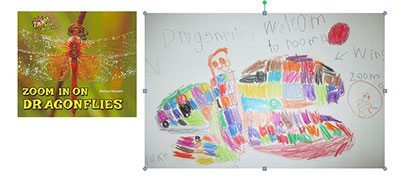

You can see more samples in this fun video created by Mrs. Groden, the teacher-librarian at Memorial Elementary School.
Text Structure Swap
Fourth grade teaching team
Kennedy Elementary School, Billerica, MA
After reading No Monkeys, No Chocolate, the students made book maps to get a stronger sense of the architecture of the main text, which has what I call a cumulative sequence structure (my mentor texts were traditional cumulative tales, such as The House that Jack Built and I Know an Old Lady Who Swallowed a Fly.)
Then each child chose one example from the text and rewrote it with a cause and effect text structure. What a great idea!
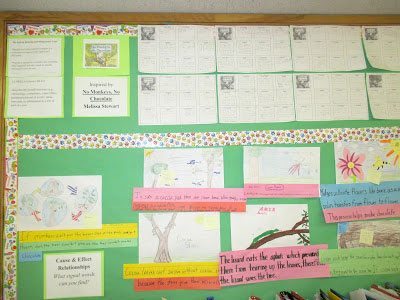
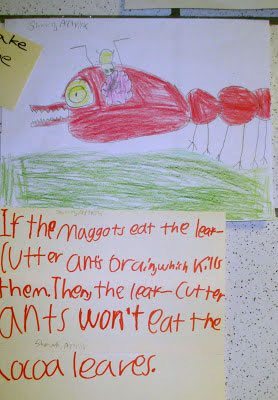
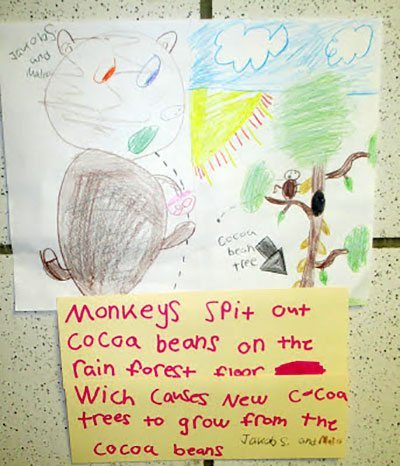
Experimenting with Text Structures
Second grade teaching team
Wealthy Elementary School, East Grand Rapid, MI
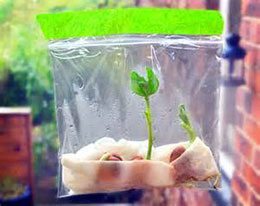 While growing bean plants, students read a wide variety of age-appropriate nonfiction books about plants and plant growth. Then each child wrote about the beans using the text structure of his or her choice. The range of samples included using:
While growing bean plants, students read a wide variety of age-appropriate nonfiction books about plants and plant growth. Then each child wrote about the beans using the text structure of his or her choice. The range of samples included using:
- sequence structure to describe their plant’s growth sequence.
- compare and contrast structure to explain the differences they observed between their seed and seeds placed in low-light conditions or deprived of water.
- cause and effect structure to describe how low light or lack of water affected seeds.
- how-to structure to explain how students cared for their seed.
- description structure to document the appearance of their plant with meticulous attention to detail.
Wow! I was blown away.
Radical Revision!
Kennedy Elementary School
Billerica, MA
As teachers listened to me describe the 10-year process of revising No Monkeys, No Chocolate, they hatched a plan for a project I love. They’re asked first graders to write a piece of nonfiction. Next year, when the students are in second grade, teachers will share the No Monkeys, No Chocolate Revision Timeline on my website and ask the children to revise the piece they wrote in first grade. Good idea, right? But it gets even better. Both drafts will be placed in a folder, and the students will revise the piece again in third, fourth, and fifth grade.
Imagine how different the final piece will be from the original! It will allow children to see tangible evidence of their growth as writers and give them a true sense of how long it can take to write a book.

Authentic Illustration
K‑2 teachers, Middle Gate Elementary School
Newtown, CT
As teachers listened me describe the process of making When Rain Falls, they came up with a great idea. After students have written nonfiction about a topic of their choice, children in another class at the same grade level will illustrate the text. Then the original writers will critique the artists’ work. Did they make any factual errors in their drawings? This activity mimics the process nonfiction authors go through when they review sketches created by an illustrator.

Science and Stories Laboratory
Ms. Beecher, Literacy Coördinator
Pasadena (CA) Unified School District
Using Perfect Pairs: Using Fiction & Nonfiction Picture Books to Teach Life Science as a guide, Ms. Beecher worked with the staff at Jackson STEM Dual Language Magnet Elementary School to design an innovative Science and Stories Laboratory that immersed students in a fabulous multi-week adventure of reading, writing, and exploring. Take a look at this fun video to see some of the highlights.
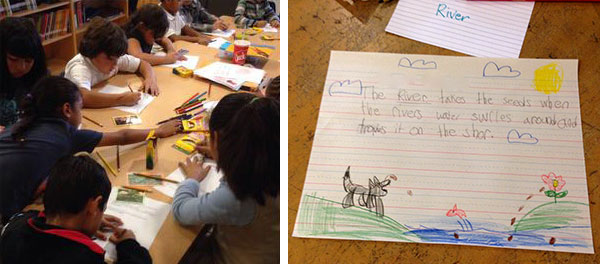
Like teachers all across America, I’m more than ready for summer break. But I’m also looking forward to seeing even more terrific ideas for teaching informational reading and writing next year. It’s a great time for nonfiction!

Excellent ideas, Melissa. I love the longitudinal one with revising yearly.
This is wonderful, Melissa. Thanks so much for compiling and sharing.
What great ideas! I love No Monkeys No Chocolate and look forward to sharing it with kiddos next year.